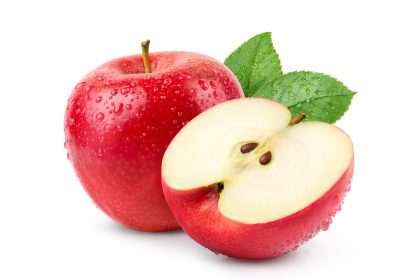When struggling with weight loss despite dedicated effort, the culprit often hides in plain sight on your plate. Many foods marketed as healthy or assumed to support weight management actually work against your goals through hidden calories, problematic ingredients, or metabolic effects. Understanding these surprising saboteurs helps you make truly informed choices that align with your weight loss objectives rather than secretly undermining them.
The health halo effect
The psychological phenomenon known as the “health halo effect” creates one of the most significant barriers to effective weight management. This cognitive bias leads us to overgeneralize positive attributes of foods in ways that significantly impact consumption patterns.
When foods carry health-focused labels like “organic,” “natural,” “gluten-free,” or “low-fat,” consumers often perceive them as automatically healthier regardless of their actual nutritional profile. This perception frequently leads to consuming larger portions under the assumption that these “healthy” foods contribute less to calorie intake. Research consistently shows that people eat significantly more calories when foods have these health-focused labels compared to identical foods without such labels.
Marketing tactics deliberately exploit this psychological vulnerability. Product packaging featuring fitness imagery, nature scenes, or health-focused terminology creates positive associations that influence purchasing decisions far more than the nutrition facts panel. Even package colors affect perception, with green packaging subconsciously suggesting healthfulness regardless of actual nutritional content.
The permission paradox further compounds this issue, where “healthy” food choices earlier in the day seem to grant psychological permission for less healthy choices later. Someone who chooses a salad for lunch might feel justified having dessert after dinner, often consuming more total calories than if they’d made moderate choices throughout the day.
Calorie underestimation occurs more dramatically with foods perceived as healthy. Studies demonstrate that consumers consistently underestimate calories in dishes from restaurants marketed as healthy compared to identical meals from conventional restaurants. This miscalculation often leads to inadvertent overconsumption that directly counters weight management goals.
The category trap represents another manifestation of this bias, where foods belonging to categories perceived as healthy (like smoothies, granola, or plant-based items) receive less nutritional scrutiny. This categorical thinking leads consumers to overlook actual nutritional profiles that might include excessive sugar, fat, or calories that work against weight management.
Understanding this psychological phenomenon helps explain why many seemingly healthy foods sabotage weight loss efforts despite good intentions. Recognizing these mental shortcuts allows for more objective food evaluation based on actual nutritional content rather than marketing-influenced perceptions.
Deceptive smoothies and juices
Beverages often fly under the dietary radar, with smoothies and juices representing particularly problematic examples that sabotage weight loss while maintaining healthy reputations.
Fruit-heavy commercial smoothies often contain staggering amounts of sugar, with popular retail options containing up to 70-100 grams of sugar per serving – equivalent to multiple candy bars. This sugar comes primarily from concentrated fruit sources like juice, purées, and frozen fruits, along with additional sweeteners like honey, agave, or syrup. While technically “natural” sugars, these concentrated forms affect blood glucose similarly to added sugars, triggering insulin responses that promote fat storage.
The fiber disruption in blended drinks significantly impacts their metabolic effect. Whole fruits contain fiber structures that slow sugar absorption and provide satiety. Blending physically disrupts these structures, making sugars more immediately available to the bloodstream. This process creates drinks that cause sharper blood sugar spikes than eating the whole fruit ingredients separately would, leading to energy crashes and renewed hunger shortly after consumption.
Portion distortion particularly affects commercial smoothies, with standard sizes often containing 16-32 ounces. These oversized portions deliver calorie counts comparable to full meals (400-800 calories) while being consumed as snacks or alongside meals. The liquid format compounds this problem, as the body registers fewer satiety signals from calories consumed in liquid form compared to the same calories from solid foods.
Ingredient layering creates another hidden challenge. Beyond fruits, commercial smoothies often contain calorie-dense additions like nut butters, protein powders, sweetened yogurt, milk alternatives, and supplemental “boosts.” While individually nutritious, these combinations create beverages with calorie profiles resembling desserts rather than health drinks.
Juice presents similar challenges despite its health-oriented reputation. Cold-pressed or freshly squeezed juices concentrate the sugars from multiple fruits while removing fiber. This concentration means a typical 16-ounce juice contains more sugar than the recommended daily limit, with minimal protein or fiber to slow absorption. The “detox” or “cleanse” marketing surrounding these products further enhances their perceived healthfulness despite their potential to disrupt blood sugar regulation.
When consumed regularly, these liquid calories significantly impact weight management by adding hundreds of uncompensated calories to daily intake. The body simply doesn’t register liquid calories efficiently in its satiety mechanisms, meaning these drinks add to total calorie consumption without reducing intake from other sources.
For those seeking healthier alternatives, focusing on vegetable-based smoothies with limited fruit, adequate protein, healthy fats, and reasonable portions creates beverages that actually support rather than undermine weight management goals.
“Healthy” breakfast foods
Breakfast options marketed as nutritious choices often contain surprising obstacles to weight management, creating a challenging start to the day for those monitoring their weight.
Granola represents one of the most misleadingly positioned breakfast foods. Despite its wholesome image featuring oats, nuts, and dried fruits, commercial granolas typically contain significant added sugars (honey, maple syrup, brown sugar, or coconut sugar) and oils that dramatically increase calorie density. Standard portion sizes (typically ¼ to ½ cup) contain 250-350 calories before adding milk, yet most consumers pour substantially larger amounts. The combination of high calorie density, minimal protein, and added sugars creates a breakfast that spikes blood sugar, triggers insulin response, and leads to mid-morning hunger despite substantial calorie intake.
Flavored yogurts seem like protein-rich, calcium-packed choices, but fruit-on-the-bottom or pre-flavored varieties contain approximately 3-5 teaspoons of added sugar per serving. Low-fat versions typically contain even more sugar to compensate for flavor loss from fat removal. The health halo surrounding yogurt leads many consumers to overlook these added sugars, which can trigger cravings and hunger throughout the morning when breakfast should provide sustained energy.
Breakfast cereals specifically marketed for health or weight management often contain problematic nutritional profiles despite front-package claims. Many contain processed grains that digest rapidly, minimal fiber (despite whole grain claims), and surprising amounts of added sugar. The combination of these factors creates blood sugar instability that drives hunger shortly after eating. Portion sizes listed on packages (typically 3/4 to 1 cup) also drastically underrepresent actual consumer consumption, leading to significant calorie underestimation.
Breakfast bars and pastries designed for on-the-go convenience typically contain troublesome ingredient combinations despite health-focused marketing. Most contain some variation of concentrated sweeteners, refined flours, and palm or vegetable oils that create high-calorie, low-satiety foods. Even protein-enhanced varieties often contain sweeteners that counteract their potential benefits for stable energy. Their convenience and individually wrapped portions create a sense of portion control that belies their actual impact on daily calorie intake.
Pre-made smoothie bowls have emerged as trendy breakfast options that appear virtuously healthy while containing surprising amounts of sugar. Between the fruit base, granola toppings, drizzled honey, and additional fruit garnishes, these beautiful creations often contain 60-75 grams of sugar per serving – about the same as a standard candy bar – while providing minimal protein to stabilize blood sugar or support satiety.
Plant milks used in breakfast preparations create another potential pitfall. While offering lower calories than dairy milk, sweetened varieties contain added sugars that contribute to daily intake. Additionally, many contain thickeners and emulsifiers that some research suggests may disrupt gut bacteria and potentially affect metabolism. The perception of these milks as universally healthier than dairy leads many consumers to overlook their actual nutritional profiles when used liberally in breakfast preparations.
Creating truly supportive breakfast options requires focusing on protein adequacy (20-30g), moderate complex carbohydrates, healthy fats, and fiber – combinations that provide stable energy rather than the blood sugar rollercoaster that undermines weight management throughout the day.
Sneaky salad saboteurs
Salads epitomize healthy eating in popular perception, yet many common salad components and preparations transform these seemingly virtuous dishes into calorie bombs that actively work against weight loss goals.
Creamy dressings represent the most significant salad saboteur, with standard two-tablespoon servings of ranch, caesar, or blue cheese varieties containing 140-170 calories from oil, mayonnaise, buttermilk, and added sugars. Most restaurant salads and many home preparations use far more than this standard serving, often adding 300-400 calories of primarily fat to an otherwise light dish. The creamy texture and flavor enhancement these dressings provide creates a psychological permission effect where the perceived healthfulness of eating salad justifies liberal dressing application.
Crunchy toppings like croutons, tortilla strips, wonton crisps, or candied nuts add surprisingly significant calories through their combination of refined carbohydrates, oils, and added sugars. These additions typically contribute minimal nutritional value while adding 100-200 calories per serving through their concentrated, processed ingredients. Their textural contribution makes salads more satisfying, but their caloric impact often passes unnoticed due to their seemingly small volume contribution to the overall dish.
Sweetened dried fruits frequently appear in gourmet salads, adding concentrated sugar content along with their tart flavors. Standard dried cranberries, for example, contain approximately 26 grams of sugar in a 1/3 cup serving – almost equivalent to candy while being perceived as a nutritious salad component. The dehydration process concentrates natural fruit sugars while commercial varieties often add additional sweeteners, creating ingredients that impact blood sugar similar to conventional sweets despite their placement in otherwise healthy dishes.
Cheese additions transform many salads through significant fat and calorie contributions that consumers often underestimate. Standard amounts (1/4 to 1/3 cup) of shredded cheese add approximately 100-150 calories primarily from fat, while crumbled varieties like feta or blue cheese appear less substantial while adding similar calorie amounts. The protein content in cheese provides some nutritional benefit, but the calorie density often exceeds what many would choose if they recognized the impact on the overall dish.
Protein preparations significantly affect salad calorie content in ways that surprise many health-conscious consumers. Breaded and fried chicken adds approximately 200 more calories than grilled preparations. Similarly, taco meat, bacon crumbles, or processed deli meats add saturated fats and sodium that work against both weight management and cardiovascular health despite adding desirable protein content to salads.
Pre-made salad kits marketed for convenience contain concerning ingredient combinations despite their healthy positioning. Most include dressings, toppings, and mix-ins that collectively transform otherwise low-calorie vegetables into complete meals containing 350-500 calories per serving without providing adequate protein for meal-level satiety. The perceived healthfulness of these grab-and-go options leads many consumers to add additional protein sources without accounting for the already substantial calorie content of the base kit.
Creating truly weight-supporting salads requires focusing on vegetable variety, adequate lean protein, moderate portions of healthy fats from avocado or olive oil, and awareness of dressing portions. This approach maintains the nutritional advantages of salads while avoiding the common additions that transform them from weight-friendly to weight-sabotaging choices.
Plant-based imposters
The expanding market of plant-based alternatives creates numerous products that leverage health perceptions while often containing ingredients and nutritional profiles that undermine weight management goals.
Veggie burgers and meat alternatives frequently contain problematic ingredient combinations despite their vegetable foundations. Many commercial options rely heavily on isolated soy proteins, wheat gluten, vegetable oils, and various binding agents that create highly processed foods despite plant-based labeling. While providing protein, these products often contain similar or higher calorie counts than lean meat options they replace, along with significantly higher sodium levels that can contribute to water retention and bloating. The health halo surrounding plant-based options leads many consumers to perceive these as automatically supportive of weight loss despite their actual nutritional profiles.
Vegan desserts and baked goods represent another category where health perception diverges significantly from nutritional reality. These products typically replace eggs and dairy with ingredients like coconut oil, nut butters, dates, agave, or coconut sugar that create calorie profiles similar to or exceeding conventional desserts. The “vegan” designation creates a powerful health association that leads many consumers to justify larger portions or more frequent consumption of these items despite their limited difference in caloric impact compared to conventional treats.
Plant-based yogurts and milk alternatives often contain added sugars and thickeners that create concerns for weight management. Many contain 3-4 teaspoons of added sugar per serving to improve flavor acceptance, along with various gums and emulsifiers that create creamy textures. The positive associations with plant-based options lead consumers to perceive these as universally beneficial choices without evaluating their specific nutritional profiles and potential impact on blood sugar regulation.
Processed vegetarian proteins like seitan, tempeh products, and flavored tofu items often contain significant sodium, added flavors, and oils that transform these whole foods into more problematic options. While providing necessary protein for plant-based eaters, the processing methods and additions create foods that behave differently in the body than their whole-food counterparts, potentially influencing hunger signals and caloric impact.
Vegetable chips and snacks create particular confusion in the weight management space. Products like beet chips, kale chips, or lentil puffs maintain strong vegetable associations while undergoing processing methods that strip fiber, concentrate starches, and add oils – creating snacks with calorie densities similar to conventional chips. The minimal vegetable content provides little nutritional advantage while the health positioning leads to consumption patterns that differ dramatically from how consumers would approach conventional chip products.
Plant-based ice creams and frozen desserts typically use coconut cream, cashews, or other high-fat plant ingredients that create calorie profiles similar to dairy ice cream despite their plant origins. The alternative positioning creates perception of lighter or more weight-friendly options that doesn’t align with their actual caloric impact, leading to portion and frequency decisions that impact weight management efforts.
Navigating plant-based eating for weight management requires focusing on minimally processed plant foods rather than replacements designed to mimic conventional products. Whole foods like beans, lentils, tofu, tempeh, and seitan in their unflavored forms, along with abundant vegetables, fruits, and whole grains, create plant-based patterns that genuinely support weight management rather than merely leveraging healthy perceptions.
Trail mixes and energy foods
Products designed for outdoor enthusiasts and athletes often work directly against weight management goals when incorporated into typical sedentary lifestyles without recognizing their intended purpose and concentrated nutrient design.
Traditional trail mix exemplifies calorie density by design, typically combining nuts, dried fruits, seeds, and often chocolate or yogurt-covered additions. This combination creates approximately 150-170 calories per small handful (1/4 cup), with minimal volume that barely registers in satiety mechanisms. Originally designed to provide maximum calories in minimum weight for hikers and climbers, these mixtures become problematic when consumed during sedentary activities like office work or television watching. The health associations with nuts and dried fruits create perception of unlimited snacking appropriateness that directly contradicts the actual caloric impact of these concentrated combinations.
Energy and protein bars designed for endurance athletes contain carefully calculated macronutrient ratios to support sustained activity. Most contain 200-300 calories from concentrated carbohydrate sources (syrups, tapioca, oats), proteins, and fats in forms designed for rapid energy availability. When consumed during normal daily activities rather than surrounding intense exercise, these products essentially function as candy bars with protein, adding substantial unneeded calories that directly counter weight management efforts.
Nut butters have transitioned from simple spreads to health food staples, with varieties like almond, cashew, and various seed butters gaining popularity for their nutrient content. While nutritionally valuable, their extreme calorie density (approximately 100 calories per tablespoon) creates significant impact when used liberally. The health positioning leads many consumers to add these to smoothies, oatmeal, toast, or fruit without recognizing that a few tablespoons can add 200-300 calories to an otherwise moderate dish.
Sports drinks and electrolyte replacements serve valuable functions during extended exercise but create problems when consumed casually. These beverages typically contain 14-17 grams of sugar per 8-ounce serving to facilitate rapid carbohydrate absorption during activity. When consumed without the corresponding exercise energy expenditure, these drinks simply add liquid sugar calories similar to soda while carrying an athletic health association that soda lacks.
Energy bites and balls marketed as healthy snacks typically combine dates, nuts, coconut, chocolate, and various superfood additions into concentrated calorie sources. Despite wholesome ingredients, the combination creates approximately 100-150 calories per small ball – similar to candy but perceived entirely differently due to their unprocessed ingredient lists. Their small size belies their caloric impact, with many consumers eating multiple pieces due to their seemingly virtuous nutritional profile.
Performance-oriented savory snacks like meat sticks, protein puffs, and savory nut mixes typically contain significant sodium and flavoring ingredients along with their protein content. When consumed regularly outside of actual endurance contexts, these snacks can disrupt hunger signaling through their hyperpalatable flavoring while adding calories designed for replenishment after calorie-burning activities rather than during normal daily energy needs.
When incorporated into appropriate activity contexts, these foods serve valuable functions for energy provision and recovery. The problem arises when their health and performance associations lead to regular consumption disconnected from the high-energy activities for which they were designed, creating substantial caloric contributions that directly counter weight management efforts.
Misleading marketing terms
Food labeling uses numerous terms that create health perceptions without necessarily indicating products that support weight management goals, leading consumers toward choices that may actively work against their weight loss efforts.
“All natural” appears prominently on products where consumers associate it with healthfulness despite the term having no standardized regulatory definition. Products containing refined sugar, flour, and oils can legally use this term while creating blood sugar impacts and caloric loads identical to conventionally labeled counterparts. This terminology creates perception of foods more aligned with weight management goals without requiring any meaningful nutritional difference from conventional products.
“No added sugar” often appears on products naturally high in sugars like fruit juices, dried fruits, or fruit-sweetened items. While technically accurate in that no additional sugars beyond those naturally present were added, these products may still contain 20-30 grams of sugar per serving that affects blood glucose and insulin response identically to added sugars. The labeling creates perception of products appropriate for sugar-conscious consumers despite potentially significant impact on blood sugar regulation crucial for weight management.
“Multigrain” and “made with whole grains” create perceptions of fiber-rich, complex carbohydrates while actually indicating very little about product nutritional quality. Products can contain minimal whole grain content (sometimes less than 10%) while primarily comprising refined flours that impact blood sugar similarly to white flour products. The grain imagery and terminology creates health associations that lead consumers toward products nutritionally similar to conventional options they’re attempting to avoid.
“Low-fat” products typically replace fat with added sugars, modified starches, salt, and flavoring agents to maintain palatability. This substitution often creates products with similar or higher calorie counts than full-fat versions while potentially increasing blood sugar impact through added carbohydrates. The persistent but outdated association between low-fat labels and weight management leads consumers toward products that may work against stable blood sugar and satiety crucial for sustainable weight control.
“Gluten-free” labeling has expanded far beyond its original purpose for those with celiac disease or gluten sensitivity to become associated with general healthfulness. Gluten-free processed foods typically contain refined alternative starches like rice, potato, or tapioca that often create higher glycemic impact than their wheat-containing counterparts. The health associations lead consumers without medical need to choose these products expecting weight management benefits despite nutritional profiles often less supportive of these goals.
“Organic” certification indicates production methods rather than nutritional profile, yet research consistently shows consumers perceive organic foods as having fewer calories and being more appropriate for weight management. Organic cookies, ice cream, or chips contain similar calorie content to conventional versions while their health perception often leads to larger portion sizes or more frequent consumption based on their perceived virtuousness.
“Plant-based” terminology creates strong health associations despite providing minimal information about nutritional quality. Highly processed foods containing refined ingredients, significant oils, and added sugars can carry this designation while having caloric and metabolic impacts similar to conventional processed foods. The terminology leverages positive associations with vegetables and whole plant foods while often describing products nutritionally dissimilar from these beneficial whole foods.
Understanding these marketing terms helps consumers look beyond front-of-package claims to evaluate actual nutritional information relevant to weight management goals, preventing unwitting selection of products that sound supportive but may actively work against these objectives.
Surprising sources of added sugars
Hidden sugars appear in numerous foods not typically categorized as sweets, creating unexpected obstacles to weight management through their cumulative impact on blood glucose, insulin response, and overall calorie intake.
Pasta sauces exemplify savory foods with surprising sugar content. Commercial varieties typically contain 6-12 grams of added sugar per half-cup serving – approximately 1.5-3 teaspoons – added to enhance flavor and balance acidity. These additions directly counter weight management both through their caloric contribution and their impact on blood sugar regulation. The savory perception of these products leads consumers to completely overlook their sugar content when evaluating dietary patterns.
Savory crackers and snacks marketed as sophisticated options for adults often contain added sugars that enhance flavor complexity without registering as sweet. Typical artisanal or specialty crackers contain 2-4 grams of sugar per serving, with some varieties reaching 5-7 grams through ingredients like honey, agave, or concentrated fruit juices. These additions contribute to hyperpalatability that disrupts normal satiety cues while adding calories consumers rarely register when evaluating snack choices.
Salad dressings beyond obviously sweetened varieties like honey mustard or raspberry vinaigrette contain surprising sugar amounts. Standard ranch, thousand island, and even many vinaigrettes contain 2-4 grams per two-tablespoon serving through corn syrup, honey, or sugar added for flavor balance. These additions compound the already significant caloric impact of oil-based dressings while creating products that stimulate appetite rather than supporting satiety after salad consumption.
Bread products, particularly commercially prepared varieties marketed as artisanal or premium options, typically contain added sugars that exceed what’s necessary for yeast fermentation. While traditional bread recipes use minimal sugar primarily consumed during the rising process, commercial varieties often contain 3-5 grams per slice through ingredients like high fructose corn syrup, honey, or molasses that remain in the final product. These additions affect both blood sugar response and total caloric intake while rarely being recognized as sugar sources in dietary evaluation.
Condiments and sauces create perhaps the most significant hidden sugar impact through their concentrated additions to otherwise moderate foods. Ketchup contains approximately 4 grams of sugar per tablespoon, barbecue sauce contains 5-7 grams, and many Asian sauces like sweet chili, teriyaki, or sweet and sour contain 5-10 grams per tablespoon. These additions transform protein-focused meals into surprisingly sugar-heavy options that impact blood glucose regulation and overall caloric intake.
Plant-based milk alternatives frequently contain added sugars that consumers overlook when evaluating their dietary patterns. While unsweetened varieties contain minimal sugars, vanilla or original flavors typically contain 7-13 grams per cup – approaching the sugar content of conventional flavored dairy milk. Their health positioning leads many consumers to assume these are automatically more supportive of weight management goals without examining their actual nutritional profiles.
Dried fruit snacks and bars marketed specifically for health-conscious consumers often contain additional sweeteners beyond the naturally concentrated sugars present after water removal. Ingredients like apple juice concentrate, rice syrup, or tapioca syrup add substantial sugar content to already sweet products, creating snacks with sugar content comparable to candy while maintaining healthy positioning that influences consumption patterns and frequency.
Recognizing these hidden sources becomes particularly important because their cumulative impact significantly affects both total caloric intake and the metabolic factors like insulin response and fat storage that directly influence weight management outcomes.
The calorie density paradox
Understanding how calorie density influences satiety, hunger, and overall calorie intake explains why many seemingly reasonable food choices sabotage weight management despite aligning with general health recommendations.
Calorie density refers to calories per unit volume of food, which dramatically affects how effectively foods create fullness relative to their energy contribution. Research consistently demonstrates that humans tend to eat similar volumes of food regardless of calorie content, making this metric crucial for weight management. Foods with low calorie density (typically 0.5-1.5 calories per gram) allow satisfying portions while naturally limiting calorie intake, while high-density foods (4-9 calories per gram) provide substantial calories in volumes that barely register in satiety mechanisms.
Oils represent the most extreme example of this principle, containing approximately 120 calories per tablespoon with minimal impact on fullness. While olive, avocado, and other plant oils offer cardiovascular benefits that make them healthy additions to diets, their extreme density creates significant weight management challenges when used liberally. The health associations surrounding these oils lead many consumers to add them generously to already complete meals through drizzling, dipping, or cooking methods that significantly increase calorie content without corresponding satiety benefits.
Nut butters and whole nuts similarly present this paradox through their beneficial nutritional profiles combined with extreme calorie density. A handful of mixed nuts contains approximately 170-200 calories while barely registering in hunger mechanisms, and two tablespoons of almond butter adds 180-200 calories to meals or snacks that would otherwise be moderate options. The health positioning of these foods leads to consumption patterns dramatically different from how consumers would approach calorically similar options without health reputations.
Dried fruits concentrate calories through water removal while maintaining their healthy fruit associations. One cup of fresh grapes contains approximately 60 calories, while one cup of raisins contains around 430 calories despite both being essentially the same food with different water content. This concentration process creates foods that no longer provide the volume-based satiety of their fresh counterparts while maintaining health associations that influence portion and frequency decisions.
Granola and similar clustered cereals combine multiple high-density ingredients (oats, nuts, oils, sweeteners) into products containing approximately 500-600 calories per cup compared to 100-150 calories in the same volume of basic unsweetened cereal. This density transforms what visually appears to be a moderate portion into a calorie contribution equivalent to a complete meal, creating significant discrepancies between perceived and actual intake that directly impact weight management.
Avocados present perhaps the most interesting calorie density paradox through their unquestionable nutritional benefits alongside significant calorie density. A medium avocado contains approximately 240-280 calories primarily from healthy monounsaturated fats. While offering fiber, potassium, and numerous micronutrients, their addition to meals creates substantial caloric impact that conflicts with weight management goals when not accounted for in overall meal planning.
Successfully navigating calorie density requires recognizing that nutritional value and calorie density represent separate considerations rather than aligned characteristics. Many nutritionally valuable foods require careful portion awareness precisely because their health benefits come packaged with significant calorie density that can undermine weight management when consumed without this understanding.
Beverages beyond smoothies
Liquid calories extend far beyond obvious sources like sodas and alcoholic beverages, with numerous drinks positioned as healthy choices contributing significantly to caloric intake while flying under the dietary radar.
Coffee shop specialty drinks transform a virtually calorie-free beverage into dessert-level indulgences through additions that consumers often overlook in dietary accounting. Standard medium lattes contain 190-220 calories before flavor additions, while specialty drinks like flavored lattes, frappuccinos, or seasonal offerings typically contain 350-500 calories primarily from milk, sweetened syrups, and whipped cream. The perception of coffee as fundamentally healthy leads many consumers to categorize these as beverages rather than treats, creating significant uncompensated caloric additions to daily intake.
Alternative milk lattes often receive even less scrutiny due to their plant-based positioning. Oat milk contains approximately 130-150 calories per cup compared to 90-110 in reduced-fat dairy milk, creating beverages with higher calorie counts than their conventional counterparts despite health perceptions that suggest lower impact. Coconut milk varieties similarly add significant calories through their fat content while carrying strong health associations that influence how consumers categorize these beverages.
Sweetened teas and enhanced waters typically contain 5-7 teaspoons of sugar per bottle through ingredients like cane sugar, honey, or fruit juice concentrates. Their positioning as refreshing alternatives to soda creates perception of alignment with health goals while actually delivering similar sugar content to conventional soft drinks. The natural or herbal associations surrounding these beverages lead to consumption patterns entirely different from how consumers would approach nutritionally similar sodas.
Sports and recovery drinks designed for post-workout consumption contain substantial calories through carbohydrates and proteins intended to replenish glycogen and support muscle recovery. While serving valuable functions around actual high-intensity exercise, their consumption without corresponding energy expenditure adds 150-300 unneeded calories that directly counter weight management goals. Their performance positioning creates perception of appropriate casual consumption despite formulations specifically designed for glycogen-depleted states that rarely occur in everyday activities.
Kombucha and probiotic beverages leverage their digestive health associations while many commercial varieties contain significant sugar remaining after the fermentation process. Standard bottles typically contain 8-12 grams of sugar per serving, with many consumers drinking entire bottles containing 2-3 servings and thus 16-36 grams of total sugar. The powerful health positioning of these products leads consumers to categorize them entirely differently from other sweetened beverages despite similar impacts on blood sugar and caloric intake.
Alcoholic beverages create particular challenges through both their direct caloric content and their effects on dietary restraint. Beyond their obvious caloric contribution (approximately 125 calories in standard wine servings, 150 in beer, and 100 in distilled spirits before mixers), alcohol consumption reduces inhibition around food choices while simultaneously increasing appetite through both physiological effects on blood sugar and social contexts often centered around food. The combination creates substantial impacts on overall caloric intake that extend beyond the beverages themselves.
Awareness of how beverages contribute to overall caloric intake provides an opportunity for relatively simple adjustments that significantly impact weight management success without requiring major dietary overhauls. Simply recognizing beverages as substantial caloric sources rather than exempting them from dietary accounting often creates the deficit necessary for gradual, sustainable weight management.
The way forward: Smarter substitutions
Rather than eliminating favorite foods entirely, understanding how to make strategic substitutions and modifications allows for enjoyable eating patterns that support rather than sabotage weight management goals.
For smoothies and liquid calories, simple adjustments create dramatically different metabolic impacts. Shifting the ratio toward vegetables (spinach, kale, cucumber) while limiting fruit to one portion per serving reduces sugar content while maintaining volume and satisfaction. Adding protein sources (plain Greek yogurt, unsweetened protein powder) and healthy fats (nut butter, avocado, chia seeds) in moderate amounts creates beverages that stabilize blood sugar rather than spiking it. Perhaps most importantly, treating smoothies as meal replacements rather than snacks or beverage additions aligns their substantial caloric contribution with appropriate meal-level hunger.
Breakfast makeovers represent relatively simple opportunities for significant impact. Replacing flavored instant oatmeal with plain oats topped with whole fruit and cinnamon reduces sugar while adding fiber. Choosing plain Greek yogurt with fresh berries instead of pre-flavored varieties cuts sugar substantially while maintaining the satisfying creamy texture. Eggs prepared with vegetables create protein-centered starts that stabilize blood sugar throughout the morning more effectively than cereal-based options. These adjustments maintain the convenience and satisfaction of quick breakfast options while significantly improving their support for weight management.
Salad renovations transform these dishes from potential calorie bombs to genuinely supportive options. Replacing creamy dressings with vinaigrettes and reducing portions to 1-2 tablespoons (approximately 45-90 calories) drastically cuts caloric impact without eliminating flavor. Prioritizing voluminous vegetables while treating calorie-dense toppings like cheese, nuts, and dried fruits as garnishes rather than main components maintains satisfaction while reducing overall caloric impact. Adding substantial protein through grilled chicken, fish, tofu, or legumes creates meals with staying power that prevents post-salad hunger that often leads to additional eating.
Snack substitutions focus on maintaining satisfaction while reducing caloric density. Replacing trail mix with individual components like a small portion of nuts paired with fresh fruit provides similar nutrients with built-in portion control and lower calorie density. Air-popped popcorn offers similar crunch and hand-to-mouth eating experience as chips with approximately 70% fewer calories per cup. Fresh fruit paired with protein sources like string cheese or hard-boiled eggs creates snacks with sustaining power that processed options lack despite similar calorie counts.
For plant-based eaters, focusing on whole food options rather than processed alternatives creates naturally supportive patterns. Emphasizing legumes, tofu, tempeh, and seitan in their basic forms rather than heavily processed meat alternatives provides protein with fewer additives and simpler ingredient lists. Incorporating abundant vegetables, whole grains, and fruits creates naturally satiating meals that align with both ethical choices and weight management goals without relying on processed products that mimic conventional options.
Strategic indulgence planning represents perhaps the most sustainable approach to managing treats while supporting weight management. Scheduling and fully enjoying preferred treats in appropriate portions allows satisfaction without the restriction that often leads to eventual overconsumption. This approach recognizes that sustainability requires enjoyment while creating boundaries that prevent treats from expanding beyond their designated occasions into regular consumption patterns.
Navigating the complex food environment successfully requires understanding that weight management isn’t simply about willpower but about recognizing the hidden challenges in seemingly healthy choices. By identifying these surprising saboteurs and making strategic adjustments, sustainable weight management becomes significantly more achievable without sacrificing satisfaction or food enjoyment.
The most successful approaches focus on abundance rather than restriction – emphasizing the many truly supportive options available rather than dwelling on limitations. This positive orientation creates eating patterns that feel sustaining and satisfying rather than depriving, the key characteristic that determines whether short-term changes become lifelong habits supporting weight management success.













